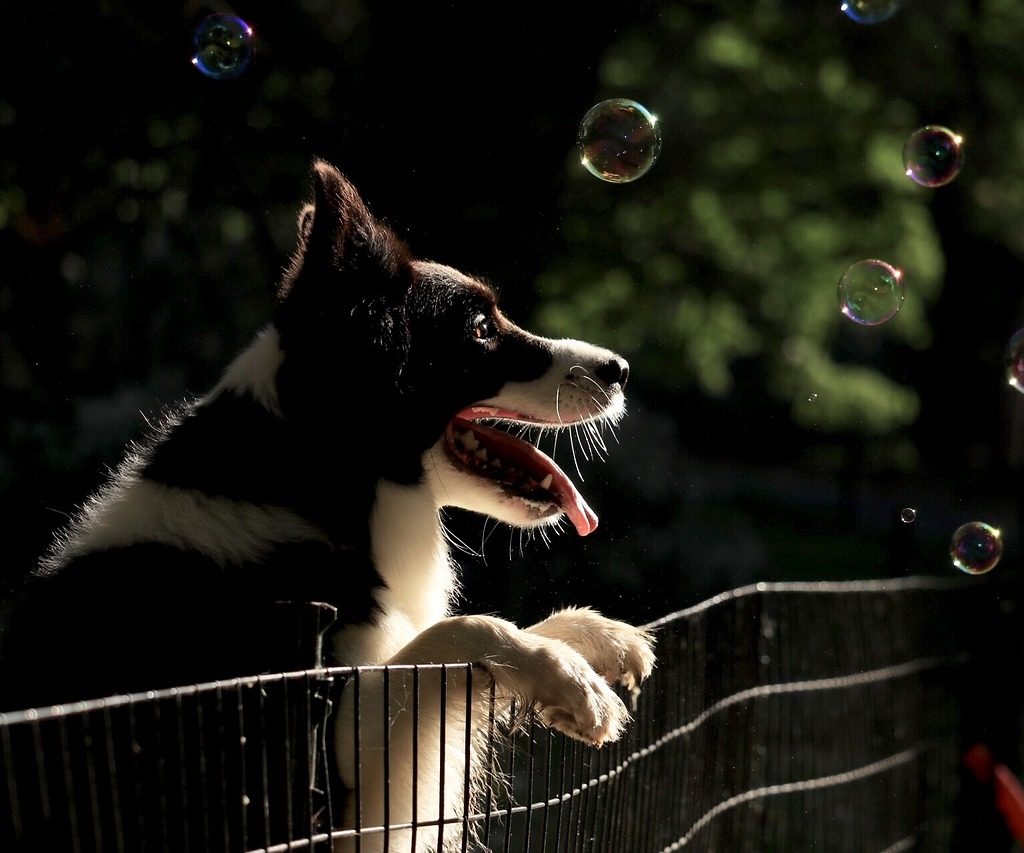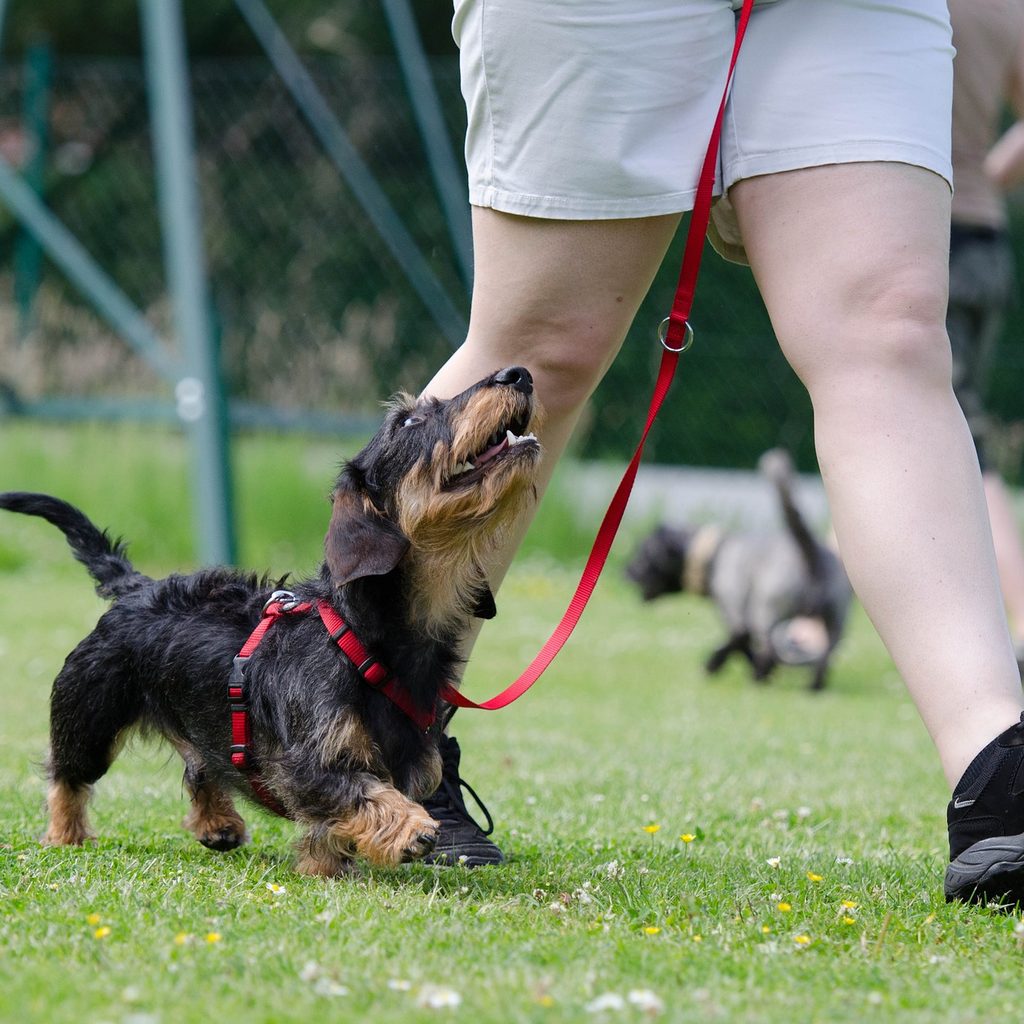Everybody likes a little room to move around, dogs included, so knowing your dog has a safe environment in which to run freely is a great feeling. That’s one of the reasons electric fencing has become such a popular resource for dog owners.
Simply speaking, an electric dog fence creates a barrier within which your dog is safe to explore. The fence consists of electric wire installed around a designated perimeter that connects to a transmitter your dog wears on his collar. When your dog gets too close to the boundary, he first receives a warning tone. If he doesn’t retreat, he receives an electric charge that encourages him to move back into the safety zone.
If you’re considering installing an electric fence for your dog, read this handy tip sheet before you get started.
Consult your veterinarian
Although an electric dog fence sounds like the answer to your problems, you should know that they aren’t the right solution for every dog. Generally speaking, this type of fencing isn’t recommended for sick, elderly, or pregnant dogs. And already fearful dogs can become traumatized by the electric charge and develop aggressive or other unusual behavior.
Regardless, it’s best to consult with your veterinarian before moving forward with this project. She can help you determine whether an electric fence is the right containment solution for your dog’s individual health and temperament.

Consider your options
Once you’ve secured your veterinarian’s approval, decide which type of electric fence to install. You have several options:
- Underground fencing. With this option, your wiring is buried underground. Although it takes a little more work to install, advantages include less damage from wild animals and environmental concerns, as well as a more visually pleasing look.
- Aboveground fencing. If you already have a traditional fence installed, or simply don’t want to go to the trouble of burying wire, you can opt for aboveground fencing. Considerations include whether an aboveground wire will interfere with mowing the lawn and whether your wild animal population is significant enough to damage the wiring.
- Wireless systems. There are no wires involved with this system. Instead, the transmitter, which is located somewhere inside your home, sends out a signal to a circular perimeter for a distance determined by you. Although there are no wires to mess with, the signal can be interrupted by topography, signal weakness, and metal siding.
Map your perimeter
Now that you know what type of system you want to install, take the time to map out exactly where your fence will go. If you’ve opted to bury your wiring, make sure you are aware of any underground utility wires and have obtained clearance from the proper municipal authorities before you dig. Tip: Lay your wire aboveground and test your dog’s collar to make sure everything works properly before you bury everything. If you’re installing a wireless system, make sure the containment area is devoid of any structures or terrain that might interfere with the signal to the transmitter.
Purchase your materials
Electric fencing systems are available online and at your local big-box stores, or if you are handy with DIY home projects, you can purchase the materials individually. Regardless, here are a few additional items you’ll want to consider:
- Wire gauge. If you’re purchasing a DIY system that contains 20-gauge wire, you may want to upgrade to a thicker gauge, like 14 or 16 (the smaller the number, the thicker the wire). It may cost a bit more upfront but also might save you time, money, and frustration in the long run.
- Surge protector. If you live in a climate with a lot of lightning and thunderstorms, you might want to pick up a surge protector. This inexpensive piece of equipment can save you hundreds of dollars in replacement costs. Be sure to buy one that works with an electric fence.
- Battery backup. When the electricity fails on your property, so does your electric fence. If you experience frequent outages, consider purchasing an uninterruptible power supply.
- Expert installation. From digging trenches to making sure the power supply works properly, there’s a lot to consider. If you’re not up for the DIY challenge, it might be worth the money to hire a professional.
Train your dog
Electric dog fencing isn’t a foolproof way to keep your dog from roaming, but it definitely won’t work unless you take the time to train him. Make sure your pet knows where the boundary markers are and what happens when he comes too close to the perimeter. Work with him for five to 15 minutes each day until he understands that the warning beep means he shouldn’t go any farther.
Most dogs learn how to adapt to an electric fence within two weeks, but remember: It won’t deter other animals from entering your yard. And each dog reacts to this security measure differently. If your dog becomes fearful or anxious, or develops injuries as a result of disregarding the boundaries, it might be time to reconsider. Keeping your dog on your property is important. If an electric fence doesn’t do the trick, it’s time to look for a safer option.



